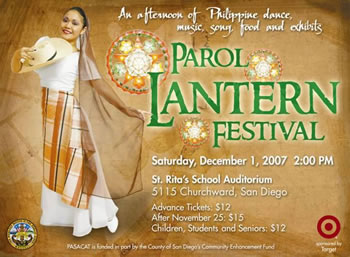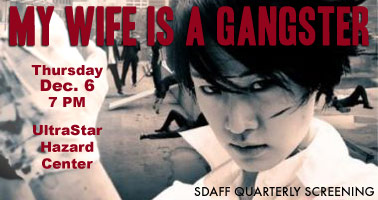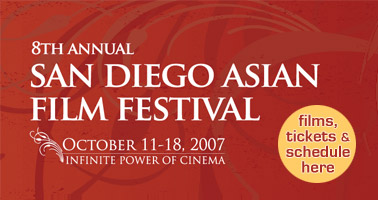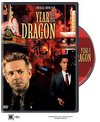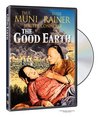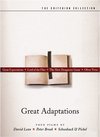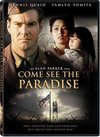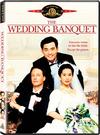Asian
Studies 310 (Upper Division GE)*
*P. 89 of the SDSU General
Catalogue 2006-2007 classifies this class under... area "B" Social and
Behavioral Sciences (and it is listed as a cultural diversity course)
Contemporary
Issues in Asian American Communities
(Aka AS310 Diasporan Communities
of the Asia Pacific)
Fall 2007
Copyright © 2007 Miguel B. Llora. All Rights Reserved.
'Customs
. . . make us who we are';
Hmong community marks new year
By Chet Barfield
STAFF
WRITER
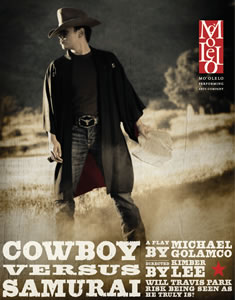 |
| General Notes |
Some
documents on this site are provided in Microsoft Word format. You will need Microsoft
Word or an equivalent to view and print these documents. Documents which are in
Microsoft Word format will be annotated with this graphic: Other documents on this site are provided in Microsoft PowerPoint format. You will need Microsoft PowerPoint or an equivalent to view and print these documents. These documents will be annotated with this graphic: Some documents on this site are provided in Adobe Acrobat format. You may need Adobe Acrobat Reader to view, fill out and print these documents. This software is available for free at Adobe's Web Site. Documents which are in Adobe Acrobat format will be annotated either with "PDF" or with this graphic:  |
ASIAN 310 - Contemporary Issues in Asian American Communities - Fall 2007
ASIAN
310 | 1 | Diaspora
& Asia Pacific | 9:30
- 10:45 | P-145 |
I
strongly encourage you to get familiar with BLACKBOARD...
Material
also provided at the Docutek
ERes or Electronic Reserves & Reserves Pages...
Course Objectives:
AS310 - Contemporary Issues in Asian American Coommunities is an interdisciplinary course related to the phenomenon of migration and settlement from countries within the Asia Pacific region. The course seeks to deepen our understanding of the ways in which migration; race, racial discrimination, and resistance to racial discrimination have shaped and continue to shape social thought as well as institutions in the United States. The course is focused on understanding Asian migration and settlement into the United States. It is organized around four inter-related themes: migration and labor, racism and resistance, identity and community, as well as migration and globalization.
The
course draws upon literature, film, anthropology, history, and cultural studies
to examine the experiences of Asian Americans living in the US. The course will
cover the colonial background to Asian immigration in the 19th century, 'racism'
and anti-Asian movements in the US, and policies towards Asian Americans during
the Second World War, the emergence of the Asian American movement during the
1960s, and most importantly we will explore how all these issues transition into
contemporary issues in Asian American communities. Through reading critical essays
supplemented viewing documentaries and full length feature films and/or reading
selected novels, short stories, oral histories, we will address issues such as
racial stereotyping, media racism, and identity. The format for this course is
that of a lecture/discussion. It is important that the student complete all readings
prior to the sessions, and participate you should come to each session prepared
with questions and ideas for discussion.
Papers and Assignments:
Your grade for the course will be determined as follows: Reading Quizzes 4 @ 10% each (40%) Paper 1 (10%), Paper 2 (10%), Oral Presentation (with PowerPoint) (20%), Final Paper (comparative) (20%)
Reading Quizzes 4 @ 10% each: I hate to do this, however, past experience has taught me that students will not read unless they have to. So in order to ensure that the required reading is done, I will administer a reading quiz that will encapsulate your reading up to that time. There will be no cumulative midterm or final. 40%
Paper 1: A three page critical summary of Omi and Winant's Racial Formations in the United States. Part 1 of the essay should be given over to an objective summary of the major arguments and themes contained in the chapter. Part 2 should be devoted to a critical appraisal (e.g. your reaction to and interpretation of the arguments presented by the authors). At the end of Part 2 you are required to raise a minimum of 2 questions stimulated by your summary and critique of this reading. Feel free to draw or compare against other readings from Takaki, Arendt, Dickens, as well as Castles and Miller. 10%
Paper 2: A three page research project that focuses on a critical interpretation of filmic representations of Asian or Asian Americans in a film selection at the 2007 San Diego Asian Film Festival. 10%
Oral
Presentation: The class will be broken down into 10 groups. 2 groups will
be assigned to each Ethnic Group under consideration. The groups will go out into
the community and collect data and do a report. Material to be collected includes,
but is not limited to (1) census information (consult the SDSU library), (2) community
newspapers (collect samples, please), (3) Find out about social services provided
to each group: translation services, community centers, and local libraries (and
if those libraries provide material in the languages under study), (4) grocery
stores and/or shops that cater to the needs of the community and their locations,
(5) places to eat and gather and their locations, (6) housing and park services,
and (7) an interview with at least one informant on the state of the community.
Reports will be a maximum of 30 minutes each: broken down to 20 minutes of presentation
and 10 minutes Q and A. 20%
Final Paper: A 6-page comparative
analysis of 2 communities under consideration. The group you presented on in comparison
(or contrast) to one of the groups lectured on. Using Takaki's Strangers from
a Different Shore as well as all the data previously gathered, this essay should
focus on two different Asian American populations. Paper needs to include analysis
of filmic representation of the groups under consideration. How are the groups
identified and represented? How were their experiences similar and different?
What were their defining racial and ethnic characteristics of each group as defined
by the dominant 'majority'? What factors account for their relative position and
status contemporary American society? 20%
The papers need to be done strictly according to MLA format. It is strongly recommended that students attend individual tutorials with me to discuss and plan their research projects.
Final
Paper Resources:
SDSU
Infodome
Article
Databases
Style
Manuals and Citation Formats
Sample
Citations in MLA Format
Required
Readings:
Fadiman, Anne. The Spirit Catches You And You Fall Down.
New York: Farrar, Straus, and Giroux, 1997.
Takaki, Ronald. Strangers from
a Different Shore: A History of Asian Americans. Boston: Little, Brown and
Company, 1998
NOTE: All required readings on the syllabus (aside from Takaki) will be available ONLINE via Blackboard and ECR or HARDCOPY at the SDSU Reserve Book Room.
|
![]()
![]() Aug. 28 - 30: Introduction
Aug. 28 - 30: Introduction![]() Sept. 4 - 6: Geographies of Asian Immigration
Sept. 4 - 6: Geographies of Asian Immigration![]() Sept 11 - 13: Early patterns of Asian Immigration
Sept 11 - 13: Early patterns of Asian Immigration![]() Sept.
18
- 20: Labor, Economic Competition and
Cultural Attitudes
[Reading Quiz
1]
Sept.
18
- 20: Labor, Economic Competition and
Cultural Attitudes
[Reading Quiz
1] ![]() Sept. 25
- 27: Collision of Cultures: Gua Sha and
Qaug Dab Peg
Sept. 25
- 27: Collision of Cultures: Gua Sha and
Qaug Dab Peg![]() Oct. 2 - 4: Legislatin Race and Exclusion
Oct. 2 - 4: Legislatin Race and Exclusion![]() Oct. 9 - 11: Seeing Brown and Yellow: "Coloring" the landscape of America
Oct. 9 - 11: Seeing Brown and Yellow: "Coloring" the landscape of America![]() Oct. 16 - 18: Model Minorities: Race and Identity in Contemporary Asian America
[Reading Quiz 2]
Oct. 16 - 18: Model Minorities: Race and Identity in Contemporary Asian America
[Reading Quiz 2]![]() Oct. 23: Chinese
and Japanese in America
Oct. 23: Chinese
and Japanese in America![]() Oct. 30: Koreans
and Filipinos in America
Oct. 30: Koreans
and Filipinos in America![]() Nov. 6: Vietnamese
in America and the Narrative of Broken Promises
[Reading Quiz 3]
Nov. 6: Vietnamese
in America and the Narrative of Broken Promises
[Reading Quiz 3]
![]() Nov. 13: Lao
and Mien in America
Nov. 13: Lao
and Mien in America![]() Nov. 20: Thai
and Tibetans in America
Nov. 20: Thai
and Tibetans in America![]() Nov. 27 - 29: Asian Americans and World War II
Nov. 27 - 29: Asian Americans and World War II![]() Dec. 4 - 6: Migration and the Contemporary Nation State [Reading
Quiz 4]
Dec. 4 - 6: Migration and the Contemporary Nation State [Reading
Quiz 4]![]()
CLASS SCHEDULE & LECTURE OUTLINES
Week 1 - Aug. 28 - 30: Introduction
The
course syllabus: philosophy; approach; expectations and requirements
Course
goals and objectives: comparative analyses of immigration; a re-visioning of history;
understanding the contemporary world
What is Asian American history?
What
do you expect from this course?
Reading: Takaki 3-21
Video:
Stuart
Hall: Race - The Floating Signifier (22581) TV7471V
Stuart Hall: Representation
And The Media (23670) TV8583V![]() Race: The Floating Signifier
Race: The Floating Signifier
![]()
Week
2 - Sept. 4 - 6: Geographies of Asian Immigration
European
colonialism and Asia, western expansion and Asian migrations, Asia in the colonial
imagination; race in 19th century European and American thought, "Manifest
Destiny" and continental empire, and early Asian arrivals in north America.
Reading:
Said, Edward. "Introduction." in Culture and Imperialism.
xi-xxviii. New York: Vintage Books, 1994.
Arendt, Hannah. "Expansion
and the Nation State." in Chapter 5 - "The Political Emancipation
of the Bourgeoisie." in The Origins of Totalitarianism. 124-134. Cleveland:
Meridian Books, 1969.
Great Expectations - Afterword
Video:
Edward
Said On Orientalism (22580) 1998 TV7470V
Great Expectations (1946) DVD-863
Great
Expectations (1998) (Lecturer's Collection)![]() Geographies of Asian Immigration
Geographies of Asian Immigration
![]()
Week
3 - Sept 11 - 13: Early patterns of Asian Immigration
Sept.
11
The United States as a colonial power: 'Opening' Asia; Asia as Far
East or Far West? Understanding the 'Push-Pull paradigm: conditions in countries
of origin; conditions in the United States; 'rational choice' and immigration;
limits of the push-pull paradigm, Gender and immigration (picture brides), destination
countries other than the United States and Canada, The 'coolie' trade and human
trafficking, sojourners and immigrants: why some stayed and others did not; laborers,
political exiles, intellectuals, aliens and nationals, and commonalities and differences.
Reading:
Takaki 132-147; Castles and Miller 18-42
Video:
Wataridori: Birds Of
Passage (22503) TV7545V
Sept.
13
Immigration
and assimilation; and the vocabulary of immigration, migration and settlement
Reading:
Takaki 132-178; Omi and Winant 57-69
![]()
Week
4 - Sept. 18
- 20: Labor, Economic Competition and
Cultural Attitudes
Sept.
18
Perpetual Aliens, Samuel Gompers and organized labor, the business perspective,
the radical labor perspective and class interests, missionaries and the paradox
of America, and African Americans and Chinese and Japanese immigrants.
Reading:
Takaki 147-162
Video:
Picture Bride (1994)
Sept.
20
[Reading Quiz 1]
| Paper 1 Due - September 20, 2007 |
![]()
Week
5 - Sept. 25
- 27: Collision of Cultures: Gua Sha and
Qaug Dab Peg
Sept.
25
Gua Sha...
Gua sha is reported almost exclusively in Western literature
as 'cao gio'; somewhat equivocally as 'not abuse, pseudo-abuse, or pseudo-battery'.
This being a result of East Asian immigrant population's relocation to the West
during and after the Vietnam war, and the Western medical community's mixed reaction
to that population's use of their traditional medicine.
Video:
Gua Sha
(2001)
Sept.
27
quag dab peg...
Quag
Dab Peg, to the Hmong people, translates as “the spirit catches you and you
fall down.” The spirit is the soul stealing Dab, prevalent in most Hmong
cultural beliefs, peg means to catch or hit, and quag means to fall over while
one’s roots are still firmly in the ground, as grasses might be beaten down
by wind or rain. In a hmong-english dictionary, the translation is simply “epilepsy,”
as the Hmong believe that this is what is happening when a person goes into an
epileptic seizure.
Readings from Anne Fadiman's "A Spirit Catches You
and You Fall Down."
Video:
The Split Horn: Life of A Hmong Shaman
in America (2001)
![]()
Week
6 - Oct. 2 - 4: Legislating Race and Exclusion
Immigration
Laws, origins and consequences: Nationality Act of 1790; Naturalization Act of
1870; Burlingame Treaty of 1868; Chinese Exclusion Act of 1882; Gentlemen's Agreement
of 1907; Immigration Act of 1917 (Asiatic Barred Zone); Immigration Act of 1924,
War Brides Acts of 1948, Filipino and Indian Naturalization Act of 1946; Immigration
and Nationality Act of 1952. Yellow Peril in the American imagination; imperialism,
race and war; immigrants and the Yellow Peril; the United States as a 'racial'
state.
Reading: Ancheta 19-40![]() In Class Films: Portions of Crash (2004)
In Class Films: Portions of Crash (2004)
Video:
Crash DVD 1909
Crash (2004) (Lecturer's Collection)
Option B: The
"Crash" project…![]() Legislating Race and Exclusion
Legislating Race and Exclusion
![]()
Week
7 - Oct. 9 - 11: Seeing Brown and Yellow: "coloring"
the landscape of America
Exploring
race in filmic representations in U.S. popular culture.
Oct. 9
Reading:
Seeing Yellow: Asian Identities in Film and Video by Richard Fung in Aguilar-San
Juan 161-171![]() In Class Films:
Yellow
Fever and The Cheat (1915) - whole movie!
In Class Films:
Yellow
Fever and The Cheat (1915) - whole movie!
or Slanted Screen
Oct.
11
Reading: A Genealogy of the "Yellow Peril" in Lye 12-46.
Reading:
Introduction to Romance and the "Yellow Peril" in Marchetti 1-9![]() In Class Films: Portions of Lady from Chunking (1943), Sayonara (1957), and The
Castle of Fu Manchu (1969)
In Class Films: Portions of Lady from Chunking (1943), Sayonara (1957), and The
Castle of Fu Manchu (1969)
or Slaying the Dragon
Videos:
Yellow Fever (Lecturer's Collection)
Cheat (1915) (Lecturer's Collection)
The
Thief of Bagdad (1924) (Lecturer's Collection)
The Good Earth (1937) (Lecturer's
Collection)
Bombs over Burma (1942) (Lecturer's Collection)
Lady from Chunking
(1943) (Lecturer's Collection)
The Adventures of Dr. Fu Manchu, 4 Full-Length
Episodes (1950s) (Lecturer's Collection)
The Castle of Fu Manchu (1969) (Lecturer's
Collection)
Sayonara (1957) (Lecturer's Collection)
http://www.njedge.net/~knapp/FuManchu.htm
 | The
8th Annual San Diego Asian Film Festival will be October 11-18, 2007 Mark Your Calendars! |
![]()
Week
8 - Oct. 16 - 18: Model Minorities: Race and Identity in Contemporary Asian America
Oct.
16
War, Colonialism and post 1965 Migration to the United States, New Immigrants
from Southeast Asia, Race in 21st century America, and Affirmative action
Post
1965
Reading: Takaki 406-448
Video:
Afterbirth (11703) TV5000V
Race:
The Power of Illusion Episode 1 (Race in America) VTC 2904
Race: The Power
of Illusion Episode 2 (Filipinos) VTC 2905
Race: The Power of Illusion Episode
3 (Legislation and Disadvantage) VTC 2906
![]() Communities in Transition
Communities in Transition
Oct.
18
[Reading Quiz 2]
![]()
Week
9 - Oct. 23 - 25: Chinese and Japanese in America
Oct.
23
Gam Saan Haak: The Chinese in Nineteenth-Century America
Reading:
Takaki 79-131
Ethnic Islands: The Emergence of Urban Chinese America
Reading:
Takaki 230-269
Videos:
The Joy Luck Club no #
Chinese-Americans:
Living in Two Worlds DVD 1916
The Wedding Banquet DVD 919
The Killing of
a Chinese Bookie DVD 993
Becoming American: The Chinese Experience (1) DVD
1759
Becoming American: The Chinese Experience (2) DVD 1758
Becoming American:
The Chinese Experience (3) DVD 1757
The Year of the Dragon (Lecturer's Collection)![]() Setting the Standard with the Chinese Exclusion Act
Setting the Standard with the Chinese Exclusion Act
 | Paper 2 - Due October 23, 2007 |
Oct.
25
Ethnic
Solidarity: The Settling of Japanese America
Reading: Takaki 179-229
Video:
From a Different Shore: The Japanese American Experience no #
Snow Falling
on Cedars VTC 1507
Rabbit in the Moon VTC 3163
Come See the Paradise VTC
3059![]() Issei,
Nesei, and Kibei and the the deep fissures in a community tested
Issei,
Nesei, and Kibei and the the deep fissures in a community tested
![]()
Week
10 - Oct. 30 - Nov. 1: Koreans and Filipinos in America
Oct.
30
Struggling against Colonialism: Koreans in America
Reading: Takaki
270-293
Reading: Takaki 493-497 and Latasha Harlins, Soon Ja Du, and
Joyce Karlin: A Case Study of Multicultural Female Violence and Justice on the
Urban Frontier by Brenda Stevenson
Video:
Spike Lee's Do the Right
Thing DVD 779
Sai-I-Gu VTC 2941![]() Koreans in the United States
Koreans in the United States
Nov.
1
Dollar a Day, Dime a Dance: The Forgotten Filipinos (part 1)
Reading:
Takaki 315-356
Video:
Broken Promises: Filipino American Veterans of
WWII Provided
APL Video Provided
Dollar A Day, Ten Cents A Dance no #
Closer
to Home DVD 1004
Silent Sacrifices DVD 1545
The Debut DVD 678
American
Adobo DVD 2069
Coming To America: Filipino (#5) (14402) TV5292V
In No One's
Shadow: Filipinos in America (12796) TV4963V
Filipino Americans VTC 2069![]() Filipinos in the United States
Filipinos in the United States
![]()
Week
11 - Nov. 6 - 8: Vietnamese in America and the Narrative of Broken Promises
Nov.
6
Session 1 - Pushed by "Necessity": The Refugees from Southeast
Asia
Reading: Takaki 448-463
Session 2 - "Strangers" at
the Gates Again: Mein and Hmong in America
Reading: Takaki 463-471
Video:
Vietnamese Americans: The New Generation DVD 1915
Heaven and Earth DVD
1049
VIETNAM: A TELEVISION HISTORY
1. Roots of A War (#1) (14053) VH TV3097AV
2.
The First Vietnam War, 1946-1954 (#2) (17625) VH TV3097BV
3. America's Mandarin,
1954-1963 (#3) (14049) VH TV3098AV
4. LBJ Goes To War, 1964-1965 (#4) (14050)
VH TV3098BV
5. America Takes Charge, 1965-1967 (#5) (17623) VH TV3099AV
6.
America's Enemy, 1954-1967 (#6) (14051) VH TV3099BV
7. The Tet Offensive, 1968
(#7) (14047) VH TV3100AV
8. Vietnamizing the War, 1968-1973 (#8) (17621) VH
TV3100BV
9. Cambodia and Laos (#9) (14048) VH TV3101AV
10. Peace Is At Hand,
1968-1973 (#10) (17622) VH TV3101BV
11. Homefront USA (#11) (14045) VH TV3102AV
12.
The End of the Tunnel, 1973-1975 (#12) (17620) VH TV3102BV
13. Legacies (#13)
(18343) VH TV3103V![]() Vietnamese and other Southeast Asians in the United States
Vietnamese and other Southeast Asians in the United States
Nov.
6
[Reading Quiz 3]
Nov.
8 - In Class Presentation - Cambodian Americans
Films on the Cambodians: The
Killing Fields, Cambodia:
The Betrayal, and The
Angry Skies: A Cambodian Journey
![]()
Week
12 - Nov. 13 - 15: Lao and Mien in America
Nov.
13 - In Class Presentation - Lao Americans
Nov.
15 - In Class Presentation - Mien Americans
Films on the Mien: Death
of a Shaman
![]()
Week
13 - Nov. 20 - 22: Thai and Tibetans in America
Nov.
20 - In Class Presentation - Thai Americans
Nov.
22 - In Class Presentation - Tibetan Americans
Films on the Tibetans: Seven
Years in Tibet, Kundun,
and Cry of the
Snow Lion
![]()
Week
14 - Nov. 27 - 29: Asian Americans and World War II
Session
1 - The Watershed of World War II: Democracy and Race
Reading: Takaki 357-405
Session
2 - The Watershed of World War II: Democracy and Race
Reading: Takaki 382-405
Video:
Guilty By Reason of Race (16177) TV0208V
American Experience: The Massie
Affair (Lecturer's Collection)
![]()
Week
15 - Dec. 4 - 6: Migration and the Contemporary Nation State
Dec.
4
A new regional division of labor, Citizenship and immigration, Policymaking
Contemporary Immigration in the Asia Pacific, and Transnationalization of immigration
Reading:
Takaki 472-509
Huntington, Samuel. "The Clash of Civilizations?"
Foreign Affairs 72.3 (1993): 22-49. and
Barber, Benjamin. "Introduction."
in Jihad vs. McWorld - Terrorism's Challenge to Democracy. 2-20. New York: Ballantine
Books, 1995.
Sassen, Saskia. "Introduction." in Globalization
and its Discontents: Essays on the New Mobility of People and Money. ix-xxxvi.
New York: New York Press, 1998.
Video:
Better Luck Tomorrow DVD 551
Dec.
4
[Reading Quiz 4]
| Final Paper Due - December 4, 2007 |
Finals Week - December 8 - 15
Aguilar-San
Juan, Karin, Ed. The State of Asian America: Activism and Resistance in the
1990s. Boston: South End Press, 1994.
Ancheta, Angelo. Race, Rights,
and the Asian American Experience. New Jersey: Rutgers University Press, 2003.
Arendt,
Hannah. The Origins of Totalitarianism. Cleveland: Meridian Books, 1969.
Barber,
Benjamin. Jihad vs. McWorld - Terrorism's Challenge to Democracy. New York:
Ballantine Books, 1995.
Bandon, Alexandra. Vietnamese Americans. New
York: New Discovery Books, 1994.
Cargill, Mary Terrell and Huynh, Jade Quang.
eds. Voices of the Vietnamese Boat People: Nineteen Narratives of Escape and
Survival. London: McFarland & Company, Inc., 2000.
Castles, Stephen
and Miller, Mark. The Age of Migration: International Populations Movements
in the Modern World 2nd Edition. London: The Guilford Press, 1998
Chan,
Sucheng. Asian Americans - An Interpretive History. Boston: Twayne Publishers,
1991.
Chang, Iris.
The Chinese in America. New York: Penguin Books, 2003.
Choy, Bong-youn.
Koreans in America. Chicago: Nelson-Hall, 1979.
Dickinson University
Press, 1984.
Hasegawa, Susan Shizuko. Rebuilding Lives, Rebuilding Communities:
The Post-World War II Resettlement of Japanese Americans to San Diego. F869.S22
H297 1998 (see BIBLIOGRAPHY)
Huntington, Samuel. "The Clash of Civilizations?"
Foreign Affairs 72.3 (1993): 22-49.
Hurh, Won Moo and Kim, Kwang Chung. Korean
Immigrants in America: A Structural Analysis of Ethnic Confinement and Adhesive
Adaptation. Rutherford: Fairleigh
Karnow, Stanley. Vietnam, a History.
New York: Penguin Books, 1997.
Kibria, Nazli. Family Tightrope: The Changing
Lives of Vietnamese Americans. Princeton: Princeton University Press, 1993.
Kim,
Elaine and Yu Eui-Young. East to America: Korean American Life Stories.
New York: The New Press, 1996.
Kim, Hyung-chan, ed. The Korean Diaspora:
Historical and Sociological Studies of Korean Immigration and Assimilation in
North America. Santa Barbara: ABC-Clio, Inc., 1977.
Kim, Kwang Chung, ed.
Koreans in the Hood: Conflict with African Americans. Baltimore: The John
Hopkins University Press, 1999.
Melendy, H. Brett. Asians in America: Filipinos,
Koreans, and East Indians. Boston: Twayne Publishers, 1977.
Llora, Miguel.
Fractured Communities: Filipino Americans in San Diego and the
Imperial Valley. DS2.2 .L56 2005 (see REFERENCES)
Lye, Colleen. America's
Asia: Racial Form and American Lierature, 1893 - 1945. Princeton: Princeton
University Press, 2005
Marchetti, Gina. Romance and the "Yellow Peril":
Race, Sex and Discursive strategies in Hollywood Fiction. Berkeley: University
of California Press, 1994.
Curran, James, and Gurevitch, Michael. Mass Media
and Society. New York: Arnold Publishing, 2000.
Kwok, Jenny Wah Lau. Multiple
Modernities: Cinema and Popular Media in Transnational Asia. Temple: Temple
University Press, 2003.
Lee, Josephine; Lim, Imogene; and Matsukawa, Yuko.
Eds. Re/collecting Early Asian America: Essays in Cultural History. Philadelphia:
Temple University Press, 2002.
Lim, Shirley Jennifer. A Feeling of Belonging:
Asian American Women's Public Culture, 1930-1960. New York: New York University
Press, 2006.
Lye, Colleen. America's Asia: Racial Form and American Lierature,
1893 - 1945. Princeton: Princeton University Press, 2005
Mank, Gregory
William. Hollywood Cauldron: Thirteen Horror Films from the Genre's Golden
Age. London: McFarland & Company, Inc., 1995.
Marchetti, Gina. Romance
and the "Yellow Peril": Race, Sex and Discursive strategies in Hollywood
Fiction. Berkeley: University of California Press, 1994.
Martinez, Dolores.
The World of Japanese Popular Culture: Gender, Shifting Boundaries and Global
Cultures. Boston: Cambridge University Press, 1998.
Napier, Susan J. Anime:
From Akira to Princess Mononoke: Experiencing Contemporary Japanese Animation.
New York: Palgrave Macmillan, 2001.
Omi, Michael and Winant, Howard. Racial
Formation in the United States, 2nd edition. New York and London: Routledge,
1994.
Pomerance, Murray. Ed. Bad: Infamy, Darkness, Evil and Slime on Screen.
New York: State University of New York Press, 2004.
Rutledge, Paul James. The
Vietnamese Experience in America. Bloomington: Indiana University Press, 1992.
Said,
Edward. Culture and Imperialism. New York: Vintage Books, 1994.
Sassen,
Saskia. Globalization and its Discontents. New York: New York Press, 1998.
Tran,
De; Lam, Andrew; and Nguyen, Hai Dai. eds. Once Upon a Dream: The Vietnamese-American
Experience. Kansas City: Andrews & McMeel, 1995.
Wollstein, Hans J.,
Vixens, Floozies, and Molls: 28 Actresses of Late 1920s and 1930s Hollywood.
London: McFarland & Company, Inc., 1999.
Zhou,
Min and Bankston, Carl L. Growing Up American: How Vietnamese Children Adapt
to Life in the United States. New York: Russell Sage Foundation, 1998.
Literature
Woman
Warrior by Maxine Hong Kingston
America Is in the Heart: A Personal
History by Carlos Bulosan
The Gangster of Love by Jessica Hagedorn
Dogeaters
by Jessica Hagedorn
San Diego Asian Film Festival Addendum...
Friday
October 12 Meet Director Justin Lin @ SDSU...
Come
meet in person film director Justin Lin (FF3: Tokyo Drift, Annapolis, Better Luck
Tomorrow) and actors Sung Kang (FF3:Tokyo Drift) and Roger Fan (Annapolis, Better
Luck Tomorrow).
They're coming to
SDSU to talk about their latest feature together called FINISHING THE GAME, a
mockumentary based on the real life death of Bruce Lee.
Bruce Lee's shocking
death left legions of stunned fans and a legacy of 12 minutes from his unfinished
Game Of Death. Undeterred, studio executives launched a search for his replacement
chronicled here through the eyes of five aspiring thespians who find out what
the real game is.
Plan on a block of time between 12:00 and 3:00 p.m. Exact
time and place to follow.
AS310
Finishing
the Game: |
| The
Cats of Mirikitani: Documentary about red-bereted Jimmy Mirikitani, a feisty painter working and living on the street, near the World Trade Center, when 9/11 devastates the neighborhood. A nearby film editor, Linda Hattendorf, persuades elderly Jimmy to move in with her, while seeking a permanent home for him. The young woman delves into the California-born, Japan-raised artist's unique life which developed his resilient personality, and fuel his 2 main subjects, cats and internment camps. The editor films Jimmy's remarkable journey. [Approved for AS310] |
Tie
a Yellow Ribbon: The feature-length narrative film TIE A YELLOW RIBBON gives a rare view into the emotionally complex interior of young Asian American women, featuring a Korean adoptee who needs to come to terms with her damaged past. Joy Dietrich won the Director Prize at CineVegas Film Festival for TIE A YELLOW RIBBON, her first feature film. [Approved for AS310] | 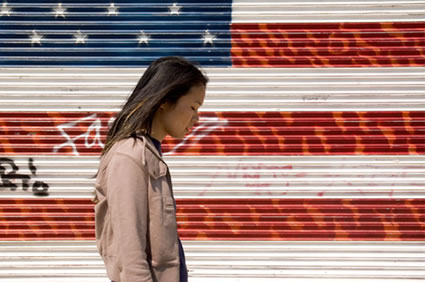 |
 | Baby:
A tragic tale of an Asian youth's gang life in South East Los Angeles, set during the mid 80's to the early 90s. [Approved for AS310] |
West
32nd: "West 32nd" takes the cameras inside New York's gritty Korean underworld. After hustling his way onto a homicide case, attorney John Kim (Cho) finds himself thrust into a sordid world of hard realities and moral compromises after he is taken under the wing of a ruthless Korean gangster who knows no limits. [Approved for AS310] |
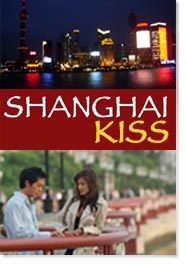 | Shanghai
Kiss: A struggling Chinese-American actor, who unwittingly finds himself involved with a high school girl, learns he has inherited his grandmother's home in Shanghai. The American-raised character moves to China in an attempt to connect with his ancestry, leaving behind quite possibly the only girl who has ever loved him. [Approved for AS310] |
Year
of the Fish: A rotoscope-animated modern-day Cinderella story set in the underbelly of New York's Chinatown. [Approved for AS310] | 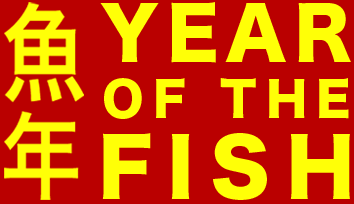 |
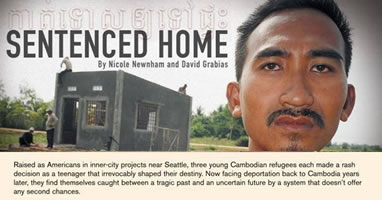 |
|
A collection of short films about the universal search for truth and justice. From the dramatic story of a young couple who hired an illegal immigrant and the civil rights movement sparked by children of Japanese WWII internee to the cry for justice of an Iraqi rapper. [Approved for AS310] | A collection of compelling short films about family and the ties that bind us. From a hilarious potluck dinner with a quirky filipino family to a father re-connecting to a son who left home to pursue filmmaking to the emotional journey of an American to see his dying father in India, this program is powerful as it is diverse. [Approved for AS310] |
Please Come Join Us!
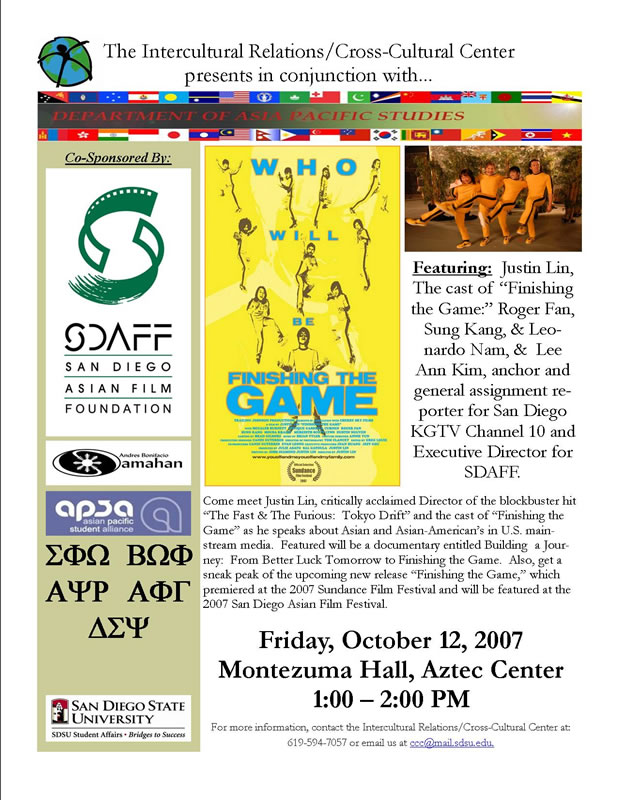
page
last updated 22 December 2007
Copyright © 2006
Miguel B. Llora, MA. All Rights Reserved.
Best viewed on Internet Explorer
5.x or later at a minimum of 1024 x 768 resolution

